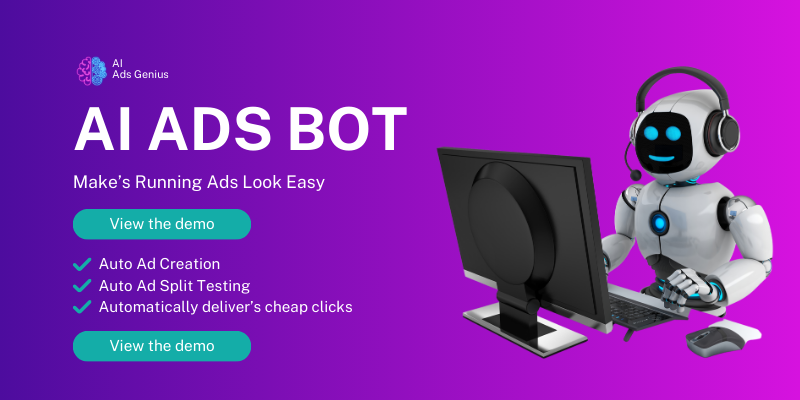Understanding Retargeting
What is Retargeting?
So, let’s kick things off with the basics! Retargeting is a way to reconnect with users who’ve interacted with your business but didn’t convert the first time around. Think of it as a gentle nudge back into your world. It’s super effective because you’re marketing to an audience that’s already shown interest, and that familiarity can really create rapport.
When I first started with Facebook ads, I found that retargeting took me from feeling like I was shouting into a void to having actual conversations with potential customers. It helps remind them of the awesome things they checked out but maybe just didn’t pull the trigger on. Whether they watched a video or just visited your page, retargeting brings them back around.
What’s amazing about this is that it taps into the psychology of marketing. People often need to see an ad several times before they feel comfortable making a purchase. By reminding them of what they liked initially, you’re encouraging that decision to finally buy!
Setting Up Your Facebook Pixel
What is a Facebook Pixel?
The Facebook Pixel is a piece of code you place on your website that tracks visitors’ actions. It’s like having a digital assistant that tells you who came to your site and what they did. Trust me, it’s a game changer! It’s crucial for retargeting because it collects data on those who are interested in your stuff.
When I installed my first pixel, it felt like turning on the lights in a dark room. Suddenly, I could see who was engaging with my content. The data it provided was invaluable in informing my ad strategy. You can actually tailor your campaigns based on real user behavior. Pretty cool, right?
The setup process is straightforward – and I promise you, it’s worth the effort! You’ll need a Facebook Ads account and access to your website’s code. Once it’s installed, you can start gathering that sweet, sweet data!
Creating Custom Audiences
Why Custom Audiences Matter
Custom audiences are the bread and butter of Facebook retargeting. You can create different segments based on user behavior, like people who added products to their cart but didn’t complete the purchase. Knowing exactly who you’re talking to helps you craft messaging that resonates more with them.
When I began running retargeting ads, I realized how important it was to segment my audiences based on their actions. For example, someone who visited my site but didn’t buy would get a different ad compared to someone who watched a product video. This tailored approach lifted my engagement rates dramatically!
Using the Audience Manager, you can create audiences based on various interactions – whether that’s website visits, engagement on your posts, or even past purchasers. It’s all about getting specific to boost those conversion rates!
Designing Your Retargeting Ads
Creating Engaging Ad Content
Your ads need to stand out! I’ve learned that the visual elements and copy in your ads directly influence your audience’s reaction. Use eye-catching images or videos that remind users why they were interested in the first place. It’s about sparking that thought again!
Also, don’t forget to include strong calls to action. Phrases like “Come back for a special offer!” or “Don’t miss out on this!” work wonders. The aim is to create a sense of urgency that nudges users to act quickly instead of just scrolling on by.
A/B testing different versions of your ads can also provide insights into what works and what doesn’t. I’ve found that switching up just a few words or images can lead to significantly different responses. It’s about finding what clicks with your audience!
Analyzing Performance and Adjusting Campaigns
Measuring Success
Alright, so you’ve set everything up – now what? It’s time to dive into the results. Evaluating the performance of your retargeting campaigns is crucial. Track metrics like CTR (click-through rate), conversion rates, and ROI. This data can tell you what’s resonating with your audience.
The first time I examined my ad performance, I was amazed at the insights I gained. Some ads were performing spectacularly while others were just flopping. These numbers guide me to spend more on what works and adjust what doesn’t. It’s a constant evolution, and I love it!
Based on your analysis, don’t hesitate to tweak your audience, your budget, or even your ad creative. Flexibility is key in advertising – what works today might not work tomorrow, and being responsive to real-time data can set you apart from the competition.
FAQs
What is retargeting?
Retargeting is a marketing strategy that allows you to advertise to users who have previously interacted with your website or content, nudging them towards conversion.
How do I install a Facebook Pixel?
You can install a Facebook Pixel by copying the code from your Facebook Ads Manager and pasting it into the header of your website. It tracks user actions and helps create custom audiences for retargeting.
What are Custom Audiences on Facebook?
Custom Audiences let you target users based on their specific behaviors on your website or your social media platforms. It’s a great way to tailor your marketing message to those who’ve shown interest.
What type of ads should I create for retargeting?
Your retargeting ads should be visually appealing and have strong calls to action. They should remind viewers of what they liked before and prompt them to return to complete their purchase.
How can I measure the success of my retargeting campaign?
You can measure your campaign’s success by tracking metrics such as click-through rates, conversion rates, and return on investment. Analyzing these will help you understand what’s working and what needs improvement.

